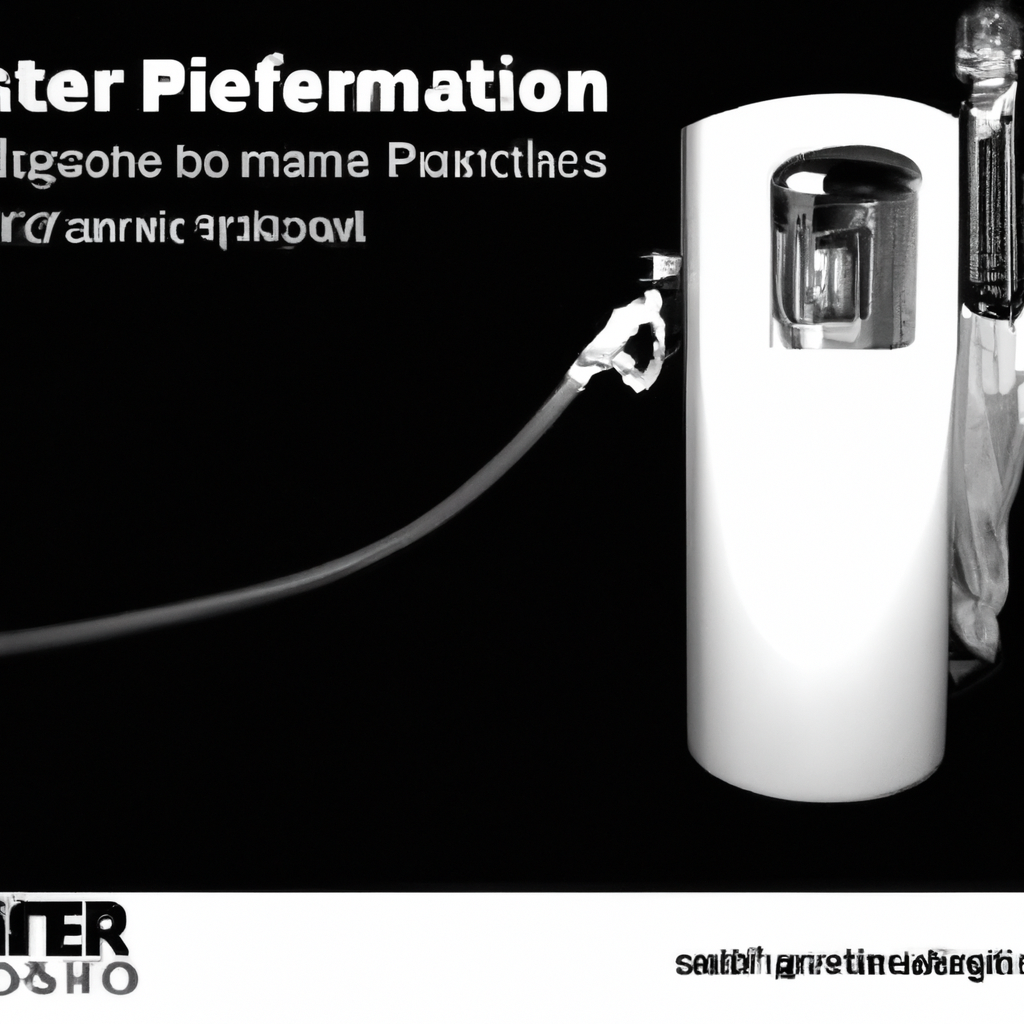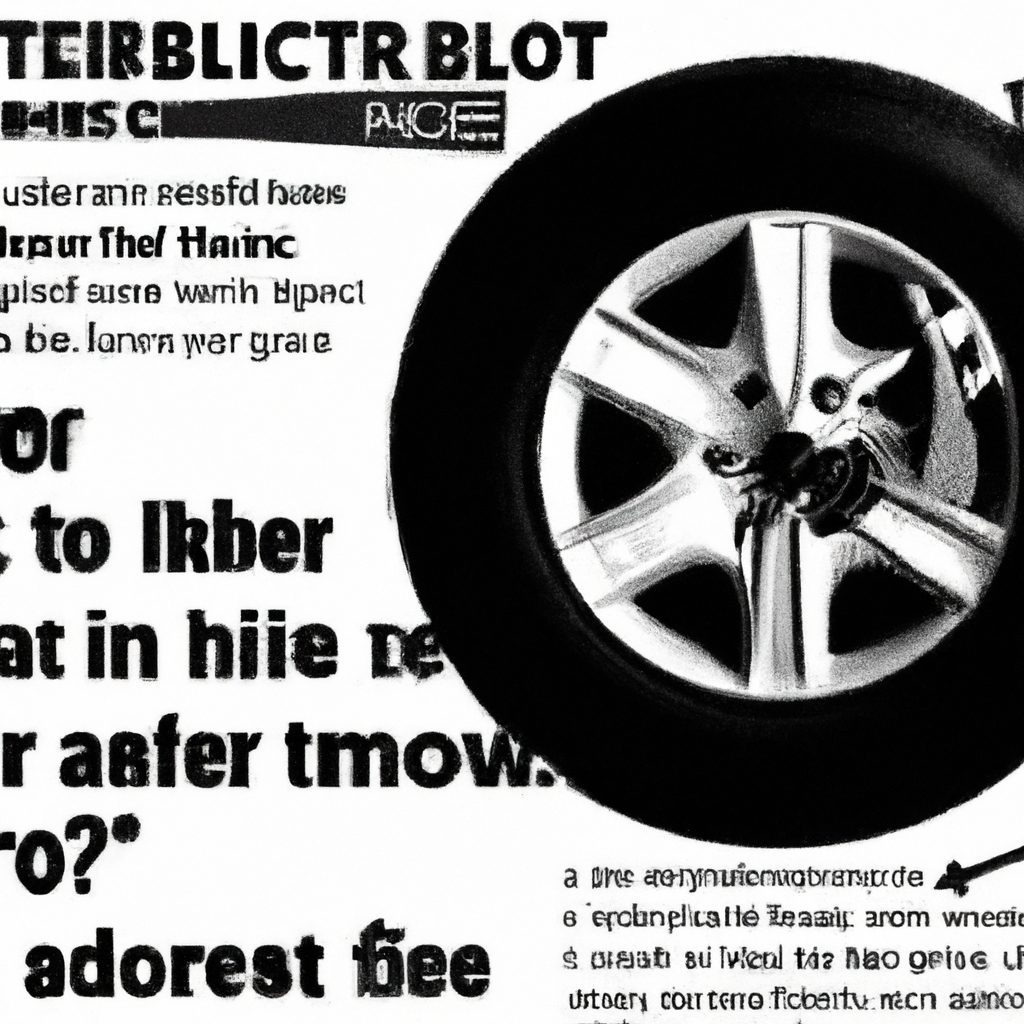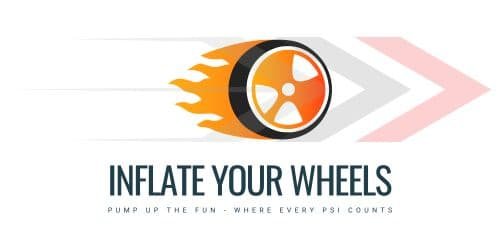Have you ever wondered how tire inflators can impact fuel efficiency? When it comes to eco-conscious transportation choices, fuel efficiency is a crucial aspect to consider. Surprisingly, tire pressure, which is often overlooked, plays a significant role in determining how efficiently your vehicle consumes fuel.
Maintaining the proper tire pressure, measured in PSI, is not only essential for your safety and performance, but it also has a direct impact on fuel efficiency. In fact, for every 1 PSI drop in tire pressure on all four tires, your gas mileage decreases by 0.2%. This means that regularly checking and maintaining your tire pressure can help you reduce your fuel consumption, increase your safety on the road, and even contribute to environmental sustainability by reducing carbon dioxide emissions.
In this article, we will delve into the importance of tire pressure, how it affects fuel efficiency, and provide useful tips to help you keep your tires properly inflated. So, let’s get started!

Exploring Tire Inflators and Fuel Efficiency for Savings
Table of Contents
How does tire pressure affect fuel efficiency?
Understanding the connection between tire pressure and fuel efficiency
Fuel efficiency is an important aspect of eco-conscious transportation choices. When it comes to maximizing fuel efficiency, many factors come into play, including tire pressure. While often overlooked, tire pressure has a significant impact on fuel efficiency.
Tire pressure is measured in PSI (pounds per square inch) and is vital for safety, performance, and fuel efficiency. The right amount of air pressure in tires ensures optimal contact with the road, improving traction and handling.
The impact of low tire pressure on fuel consumption
One of the main factors that affect fuel efficiency is rolling resistance, which is the force that opposes the movement of a tire as it rolls on the surface. Low tire pressure increases rolling resistance, as the tires deform more when they come in contact with the road. This increased resistance requires more energy, resulting in higher fuel consumption.
Studies have shown that for every 1 PSI drop in tire pressure on all four tires, gas mileage decreases by 0.2%. This may not seem significant at first, but over time it can add up and result in higher fuel expenses.
The impact of high tire pressure on fuel consumption
On the other hand, high tire pressure can also negatively impact fuel consumption. When tires are overinflated, the contact area with the road decreases, reducing traction and stability. This can lead to a decrease in fuel efficiency, as the vehicle may require more fuel to maintain control and stability. Additionally, overinflated tires may cause uneven tread wear, further impacting fuel efficiency and potentially leading to the need for premature tire replacements.
The recommended tire pressure for optimal fuel efficiency
To ensure optimal fuel efficiency, it is crucial to maintain the recommended tire pressure for your specific vehicle. The recommended tire pressure varies depending on the make and model of your vehicle and can be found in the owner’s manual or on a sticker located on the vehicle.
The tire pressure usually differs for the front and rear tires, as the weight distribution of the vehicle is different. The front tires often have a higher recommended pressure to compensate for the engine weight and provide adequate steering response.
By following the recommended tire pressure guidelines, you can maximize fuel efficiency and ensure a safe and smooth driving experience.
The Importance of Maintaining Optimal Tire Pressure
Safety implications of incorrect tire pressure
Maintaining optimal tire pressure is not only essential for fuel efficiency but also for safety. Properly inflated tires provide better traction, reducing the risk of skidding or hydroplaning. Underinflated tires, on the other hand, increase the braking distance, putting you at a higher risk of accidents.
Performance implications of incorrect tire pressure
Correct tire pressure also has a significant impact on the performance of your vehicle. When tires are underinflated, the vehicle may feel sluggish and less responsive. This can affect the handling and maneuverability, compromising your driving experience and potentially leading to unsafe situations.
Conversely, overinflated tires can make the ride feel harsher, negatively impacting comfort. It can also lead to a decrease in handling performance, as the tires may not have sufficient grip on the road.
Effect on tire longevity
Maintaining the correct tire pressure not only improves fuel efficiency and safety but also extends the lifespan of your tires. Underinflated tires tend to wear out more quickly, especially on the edges. This uneven wear can lead to the need for premature tire replacements, costing you more in the long run.
Properly inflated tires distribute the weight evenly, reducing the risk of uneven wear and extending tire lifespan. By ensuring the correct tire pressure, you can save money on tire replacements and contribute to overall cost savings.
Environmental impact of optimal tire pressure
In addition to the benefits for your vehicle and pocket, maintaining optimal tire pressure also has positive environmental implications. Correctly inflated tires reduce rolling resistance, which decreases the amount of fuel needed to move the vehicle. This, in turn, reduces carbon dioxide emissions, contributing to environmental sustainability.
By taking care of your tire pressure, you not only save money and ensure your safety but also play a part in reducing your carbon footprint.
How to Determine the Recommended Tire Pressure
Finding the recommended tire pressure for your vehicle
To determine the recommended tire pressure for your vehicle, refer to your owner’s manual. The manufacturer specifies the ideal tire pressure for each vehicle, taking into account factors such as weight distribution, tire size, and performance characteristics. If you do not have access to your owner’s manual, you can also check for a sticker located on the vehicle, usually on the driver’s side door jamb or inside the fuel filler door.
Using the owner’s manual or tire information sticker
The owner’s manual or tire information sticker will provide you with the recommended tire pressure in PSI for both the front and rear tires. It is important to note that these values are specific to your vehicle and should be followed diligently.
Understanding the different recommendations for front and rear tires
The recommended tire pressure may differ between the front and rear tires. This difference accounts for the weight distribution of the vehicle, as the engine and other heavy components are typically located in the front. It is important to adhere to these specific recommendations to maintain optimal handling, traction, and fuel efficiency.
By following the recommended tire pressure guidelines, you can ensure that your tires are inflated to the correct level for your vehicle, promoting safety, performance, and fuel efficiency.
Measuring and Checking Tire Pressure
The importance of regular tire pressure checks
Regularly checking your tire pressure is crucial to maintaining optimal fuel efficiency and safety. Tire pressure can fluctuate over time due to various factors such as changes in temperature and normal air leakage. Therefore, it is important to monitor and adjust your tire pressure regularly.
Using a tire pressure gauge
To check your tire pressure accurately, you will need a tire pressure gauge. Tire pressure gauges come in different types, including digital and analog. Both types are reliable, but digital gauges often provide a more precise reading.
Best practices for measuring tire pressure
When measuring your tire pressure, it is recommended to do so when the tires are cold. This means measuring the pressure before driving or waiting for at least three hours after driving. Cold tires ensure a more accurate reading as heat generated during driving can increase tire pressure temporarily.
To measure the pressure, remove the valve cap from the tire’s valve stem, firmly press the gauge onto the valve stem, and read the displayed pressure on the gauge. Repeat this process for each tire.
When and how often to check tire pressure
It is advisable to check your tire pressure at least once a month and before long trips. This regular monitoring helps you catch any deviations from the recommended pressure and allows you to make necessary adjustments promptly. By incorporating tire pressure checks into your routine maintenance, you can maintain optimal fuel efficiency, safety, and tire longevity.

The Role of Tire Inflators in Fuel Efficiency
Introduction to tire inflators
Tire inflators are portable devices designed to inflate tires to the correct pressure. They come in handy when you need to adjust tire pressure at home, on the road, or in emergency situations. Tire inflators provide an efficient way to maintain optimal tire pressure for improved fuel efficiency.
Types of tire inflators available
There are various types of tire inflators available on the market. The most common types include handheld inflators, corded inflators, cordless inflators, and tire inflator gauges. Handheld inflators are typically compact and require manual operation. Corded inflators are powered by a vehicle’s 12V power outlet and offer convenient inflation options. Cordless inflators are battery-powered, providing portability and ease of use. Finally, tire inflator gauges combine the functionality of a tire pressure gauge with the ability to inflate tires.
Pros and cons of different types of tire inflators
Each type of tire inflator has its advantages and considerations. Handheld inflators are portable and compact, making them easy to store in your vehicle. However, they often require manual pumping, which can be tiring and time-consuming. Corded inflators offer convenient power sources and quick inflation, but they are limited by the length of the cord. Cordless inflators provide portability and ease of use but may require a rechargeable battery or frequent battery replacements. Tire inflator gauges combine the functionality of a tire pressure gauge with inflation capabilities, providing accuracy and convenience in one device.
When choosing a tire inflator, consider your specific needs, such as portability, power source availability, and desired functionalities. Finding the right tire inflator for your requirements can greatly contribute to maintaining optimal tire pressure and fuel efficiency.
Benefits of Using a Tire Inflator Gauge
Accuracy of tire inflator gauges
Tire inflator gauges offer the advantage of accuracy when measuring and inflating tire pressure. These devices combine the functionality of a tire pressure gauge with the ability to inflate tires to the correct pressure. By using a tire inflator gauge, you can ensure precise inflation to the recommended tire pressure, maximizing fuel efficiency and safety.
Convenience and ease of use
Tire inflator gauges are designed for convenience and ease of use. With a single device, you can measure your tire pressure accurately and inflate your tires as needed. This eliminates the need for separate tools and simplifies the process of maintaining optimal tire pressure.
Portability and emergency use
Many tire inflator gauges are portable and can be easily carried in your vehicle’s trunk or glove compartment. This makes them ideal for emergency situations or when you need to adjust tire pressure while on the road. Having a tire inflator gauge on hand ensures that you can address any tire pressure issues promptly, improving fuel efficiency and safety.
Multi-functionality of some tire inflator gauges
Some tire inflator gauges offer additional functionalities beyond measuring and inflating tire pressure. They may include features such as an integrated flashlight, tire tread depth gauge, or even the ability to inflate other inflatables like sports balls or inflatable mattresses. These multi-functional tire inflator gauges provide added value and versatility for your inflation needs.
By using a tire inflator gauge, you can benefit from its accuracy, convenience, portability, and multi-functionality. These factors contribute to maintaining optimal tire pressure and fuel efficiency.
Impact of Tire Inflators on Fuel Efficiency
Effectiveness of tire inflators in maintaining optimal tire pressure
Tire inflators play a crucial role in maintaining optimal tire pressure, which directly impacts fuel efficiency. By regularly checking and inflating your tires to the recommended pressure, you can minimize rolling resistance and maximize fuel economy. Tire inflators provide a reliable and convenient way to accomplish this, ensuring that your tires are inflated to the correct level for optimal fuel efficiency.
The relationship between tire inflators and fuel efficiency
The use of tire inflators contributes to improved fuel efficiency by ensuring that your tires are properly inflated. By maintaining the recommended tire pressure, you reduce rolling resistance, thereby requiring less energy to move the vehicle. This translates to better fuel economy and lower fuel consumption.
Case studies and research on tire inflators’ impact on fuel efficiency
Research conducted by the Oak Ridge National Laboratory confirmed the relationship between tire pressure and fuel efficiency. The study found that underinflated tires increased fuel consumption by up to 6%, while properly inflated tires resulted in significant fuel savings. This research highlights the importance of tire pressure management in achieving optimal fuel efficiency.
By utilizing tire inflators and maintaining optimal tire pressure, you can make a tangible impact on your vehicle’s fuel efficiency, reducing your carbon footprint and saving on fuel costs.
Factors to Consider When Choosing a Tire Inflator
Compatibility with vehicle tires
When choosing a tire inflator, it is important to ensure compatibility with your vehicle tires. Consider the type of valve stems on your tires, as some tire inflators may not be compatible with certain valve types. It is also crucial to check the inflation range of the tire inflator to ensure it covers the recommended pressure for your tires.
Power source options
Tire inflators can be powered by various sources, including a vehicle’s 12V power outlet, rechargeable batteries, or AC power. Consider the power source options available to you and choose a tire inflator that suits your needs. If you frequently travel long distances or need to inflate tires in remote locations, a cordless tire inflator with a rechargeable battery might be the most suitable option.
Digital vs. analog tire inflators
Tire inflators come in both digital and analog variants, each with its advantages. Digital inflators typically provide a more accurate pressure reading, making it easier to achieve the desired inflation level precisely. Analog inflators rely on a pressure gauge, which may require interpretation and can be less precise than digital options. Consider your preference for accuracy and ease of use when selecting between digital and analog tire inflators.
Additional features and functionalities
Some tire inflators offer additional features and functionalities that may be beneficial for your specific needs. These can include built-in pressure gauges, LED lights for better visibility, automatic shut-off mechanisms, or storage compartments for accessories. Assess these additional features and determine their relevance to your tire inflation requirements.
By considering factors such as compatibility, power source options, type of tire inflator, and additional functionalities, you can choose a tire inflator that meets your specific needs and contributes to maintaining optimal tire pressure for fuel efficiency.

Keep your car tires in peak condition with the right inflator.
Discovering the best tire inflator can be a game-changer for maintaining your vehicle. Explore our comprehensive Ultimate Guide to the Best Tire Inflators to make an informed decision.
Tips for Using Tire Inflators Safely
Following manufacturer’s instructions and safety guidelines
When using a tire inflator, it is crucial to follow the manufacturer’s instructions and safety guidelines. Familiarize yourself with the operating procedures, safety precautions, and maintenance guidelines provided by the manufacturer. This ensures that you use the tire inflator safely and effectively.
Avoiding over-inflation and potential tire damage
It is important to avoid over-inflating your tires when using a tire inflator. Over-inflated tires can be equally detrimental to fuel efficiency, handling, and tire longevity as under-inflated tires. Follow the recommended tire pressure guidelines and do not exceed the maximum pressure indicated on the sidewall of the tire.
Over-inflated tires can lead to a harsher ride, decreased traction, and uneven tire wear. Additionally, they may increase the risk of tire blowouts, compromising your safety. Always check and adjust the tire pressure with care and avoid over-inflation.
Preventing accidents and injuries while using tire inflators
When using a tire inflator, it is essential to take precautions to prevent accidents and injuries. Maintain a safe distance from the tire during inflation, as the sudden release of air or the tire inflator itself can cause injury. Avoid placing any body parts directly in front of the tire or near the tire inflator nozzle.
Additionally, ensure that the tire inflator is stable and secure during operation to avoid any accidents due to tipping or falling. Follow the manufacturer’s guidelines for proper placement and secure the tire inflator accordingly.
Maintaining vigilance, being cautious, and following safety guidelines will help ensure a safe tire inflation process.
Conclusion
Maintaining optimal tire pressure is essential for maximizing fuel efficiency, safety, and tire longevity. By understanding the connection between tire pressure and fuel efficiency, you can take proactive steps to ensure that your tires are properly inflated.
Regularly measuring and checking tire pressure using a reliable tire inflator gauge allows you to monitor and adjust the pressure as needed. This helps minimize rolling resistance, improve traction, and achieve better fuel economy.
Choosing a tire inflator that suits your needs in terms of compatibility, power source options, and additional functionalities ensures a convenient and effective tire inflation experience. By using a tire inflator gauge, you can benefit from accuracy, convenience, portability, and multi-functionality.
The impact of tire inflators on fuel efficiency is significant, as maintaining optimal tire pressure reduces rolling resistance and fuel consumption. By adhering to the recommended tire pressure guidelines and utilizing tire inflators, you can make a positive contribution to your vehicle’s fuel efficiency and environmental sustainability.
Incorporate regular tire pressure checks and the use of a reliable tire inflator gauge into your maintenance routine. By doing so, you not only ensure optimal fuel efficiency but also enhance safety and extend the lifespan of your tires. Take proactive steps for fuel efficiency and tire longevity by prioritizing tire pressure management.

Keep your car tires in peak condition with the right inflator.
Discovering the best tire inflator can be a game-changer for maintaining your vehicle. Explore our comprehensive Ultimate Guide to the Best Tire Inflators to make an informed decision.

